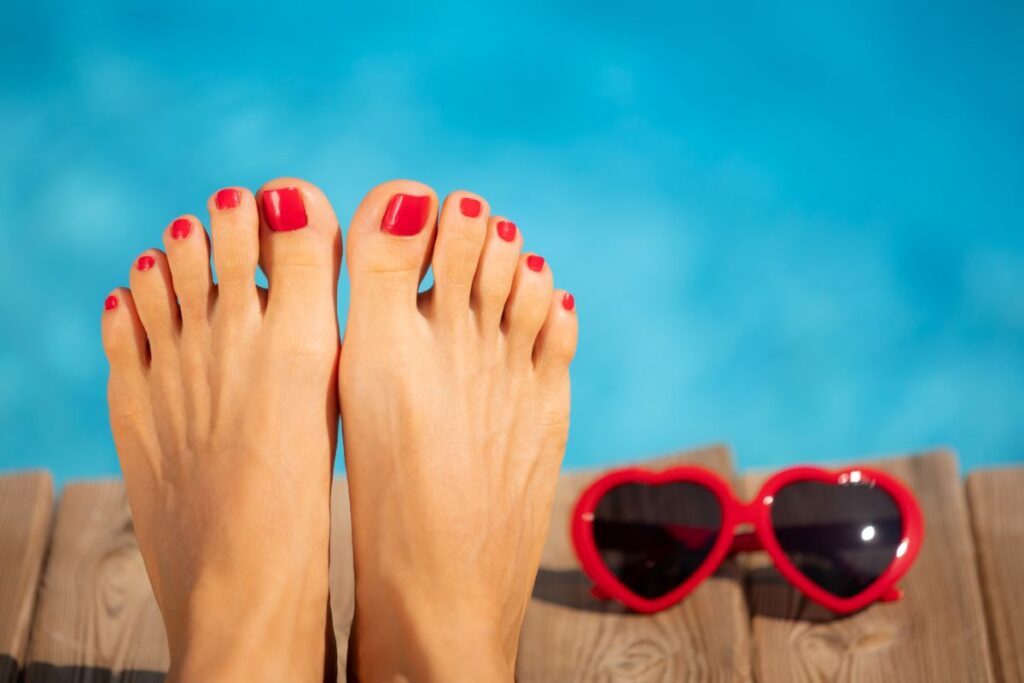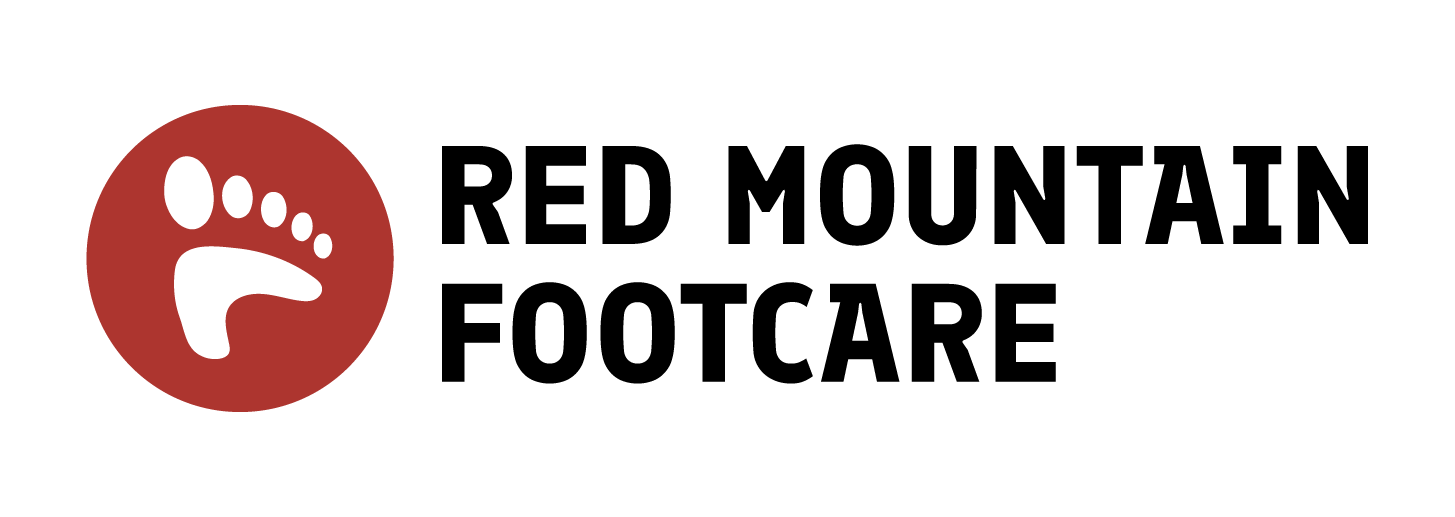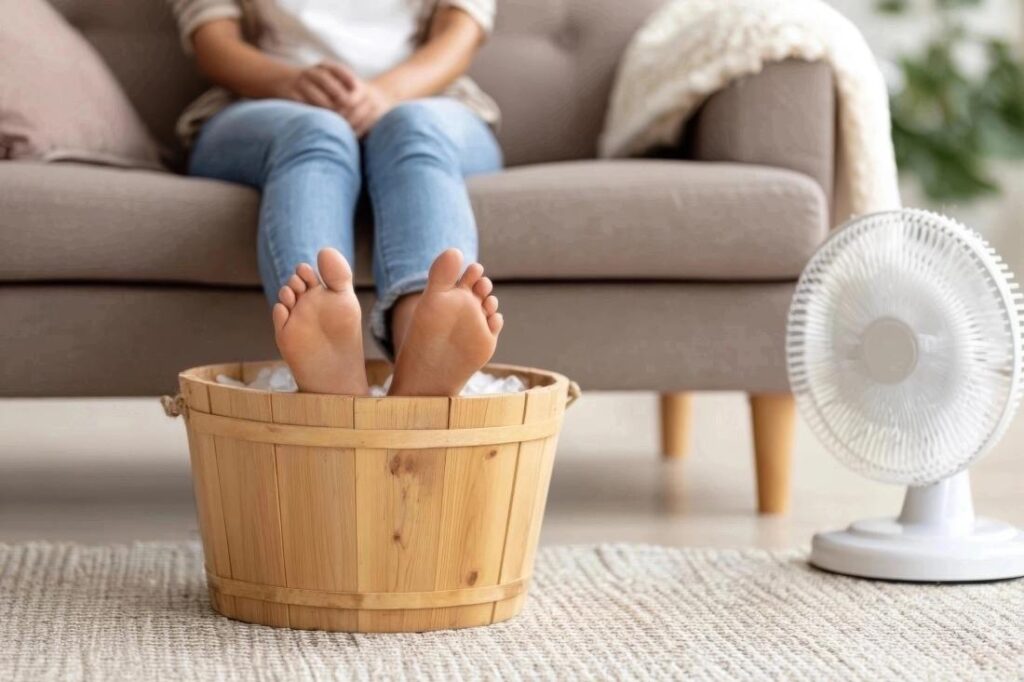5 Common Summer Foot Problems (And How to Fix Them Fast!)

Summer brings sunshine, vacations, and outdoor fun, but it can also wreak havoc on your feet. Between sweaty sandals, long walks, and exposure to bacteria, your feet face unique challenges in the heat. The good news? Most summer foot problems are preventable and treatable. Below, we’ll explore the five most common warm-weather foot woes and the doctor-approved solutions to keep your feet healthy all season long.
1. Managing Sweaty Feet in Summer
Why Your Feet Overheat (And Stink) in Summer
Your feet contain about 250,000 sweat glands, which is more per square inch than any other body part. When temperatures rise, these glands work overtime, creating a damp environment perfect for odor-causing bacteria.
Science-Backed Solutions to Keep Feet Dry
Consider upgrading your socks to ones made from Merino wool or bamboo fibers, which are much more effective at wicking away moisture than traditional cotton. If excessive sweating is a concern, try using aluminum chloride sprays. These dermatologist-recommended products block sweat ducts to reduce perspiration. Tea tree oil is a powerful natural antibacterial agent that can help combat foot odor. Simply mix it with a bit of coconut oil before applying. Lastly, rotating your footwear is key to keeping shoes fresh at every wear. Cedar inserts can help absorb moisture while maintaining shoe shape.
Pro Tip: For instant relief, store moisturizing foot wipes in your bag for quick freshening between activities.
2. Avoiding Foot Blisters in Summer
Nothing derails a vacation stroll like a blister. Friction, heat, and moisture shear the top layer of skin away, creating a fluid-filled bubble primed for infection.
The Physics of Blister Formation
Blisters develop when shear forces separate skin layers, causing fluid to accumulate. Summer factors like humidity (softening skin) and sandal straps (creating friction points) increase risk.
Blister Prevention Strategies That Actually Work
The key to preventing blisters on the foot is reducing or stopping friction inside the shoe. Specialized double-layer hiking socks use a slippery inner layer to reduce friction against the skin. For sandals that cause blisters between the toes, silicone toe caps offer protection. Keeping your skin well-hydrated also plays a key role, as moisturized skin is more resilient and less prone to tearing.
When it comes to breaking in new footwear, start with just a few hours a day and gradually build up. Wearing thick socks with new shoes can help gently stretch the shoe while molding it to your foot. In a pinch, moleskin padding can help relieve friction on obvious pressure points. Simply cut the moleskin to the desired shape and stick it to the inside of the shoe.
When Disaster Strikes: Already have a blister? Clean with mild soap, leave the roof intact to shield new skin, and pad it with a donut-shaped dressing. Seek medical care if redness spreads or pain pulses
3. Preventing Summer Foot Fungus
Common symptoms of foot fungus include itching, peeling, and a scaly rash between toes or on soles. Milder cases can usually be treated at home, but more advanced fungal infections require medical attention.
How Fungus Thrives in Summer Conditions
The combination of warmth (80-90°F), moisture (from sweat or pools), and darkness (inside shoes) creates an ideal fungal breeding ground.
Evidence-Based Fungus Fighters
Wearing copper-infused socks can help keep feet healthy, as copper ions naturally inhibit the growth of microbes. Applying probiotic powders introduces beneficial bacteria that can outcompete harmful fungi, promoting better foot hygiene. It’s also important to regularly disinfect shoes. UV shoe sanitizers are one of the most effective methods, killing up to 99.9% of microorganisms. A simple alternative is to leave shoes out in the sun, where they can both air out and disinfect in the sun’s UV rays.
If you’re particularly prone to foot fungus, try soaking your feet in a vinegar solution (one part white vinegar, 2 parts water). This alters the skin’s natural pH levels and creates a less hospitable environment for fungus. Whenever possible, try to go barefoot so your feet can naturally air out and stay dry.
Warning Signs: Yellowing nails, peeling skin between toes, or persistent itching should be checked out by a specialist. Early treatment prevents chronic issues, so if you suspect a fungal infection contact our team at Red Mountain Foot Care.
4. Dealing with Extra Swollen Feet
The Biology Behind Summer Swelling
Heat causes vasodilation (blood vessel expansion), while gravity pulls fluids downward. Sodium retention from summer foods (BBQ, chips, etc.) exacerbates the problem.
Doctor-Approved Anti-Swelling Tactics
For long-term maintenance, a potassium-rich diet counterbalances excess sodium to directly combat water retention. Avoiding high heat can also help prevent swelling and general fatigue.
Easy Remedies to Relieve Swollen Feet
There are many treatments and accommodations available for swollen feet. Adjustable shoes with velcro or elastic lacing provide a better fit even as foot size fluctuates. For ongoing care, consider treatments that help with circulation. This could include regular foot massages and foot baths. Massages that use firm strokes from the toe to the calf encourage draining and relieve discomfort. Foot baths that alternate between warm and cool water also help with circulation and swelling.
Red Flags: Sudden severe swelling, especially if one foot is worse than the other, could indicate a blood clot and requires immediate medical attention.
5. Healing Cracked Heels
Why Summer Surprisingly Dries Out Feet
Open footwear exposes heels to drying winds and UV rays, while air conditioning strips moisture from skin. The result? Calluses split under pressure.
Expert Moisturizing Routine for Dry, Cracked Heels
- Soak – 15 minutes in warm (not hot!) water with 1 cup epsom salt to soften skin
- Exfoliate – Use a foot file or pumice stone at a 45-degree angle (never shave dry skin)
- Seal – Apply a heavy cream containing 20-40% urea, then cover the foot with a wrap or socks. Covering the foot helps seal healing moisturizer in so it can fully absorb into your skin. Not only does a sock prevent moisturizers from rubbing off on floors or bedsheets, but it stops you from slipping on hard floors (ouch!).
- Protect – During day, use a beeswax-based barrier balm on deep cracks
Advanced Care: If you develop fissures that bleed, make sure to clean the cracks carefully but thoroughly. Deep cracks are easy entry points for infections, and may require specialist attention.
Final Tips for Happy Summer Feet
Inspect your feet daily for early signs of trouble, and prioritize supportive footwear over fashion during long outings. Stay hydrated, and moisturize regularly to maintain skin elasticity.
By addressing these common issues proactively, you can enjoy summer activities without foot pain or discomfort. If symptoms feel unmanageable or uncomfortable to the point of disrupting your routines, contact a specialist. Treatment for these common foot conditions is non-invasive and often very minimal when started early.
Remember: Prevention beats treatment. Start these routines early in the season rather than waiting for problems to develop. Your feet carry you through life’s adventures—give them the summer care they deserve!
Schedule Your Visit
Our expert team is happy to answer your questions and restore the health of your feet. Book an appointment at Red Mountain Footcare in Mesa, Arizona to get personalized care and expert advice. We look forward to hearing from you!

